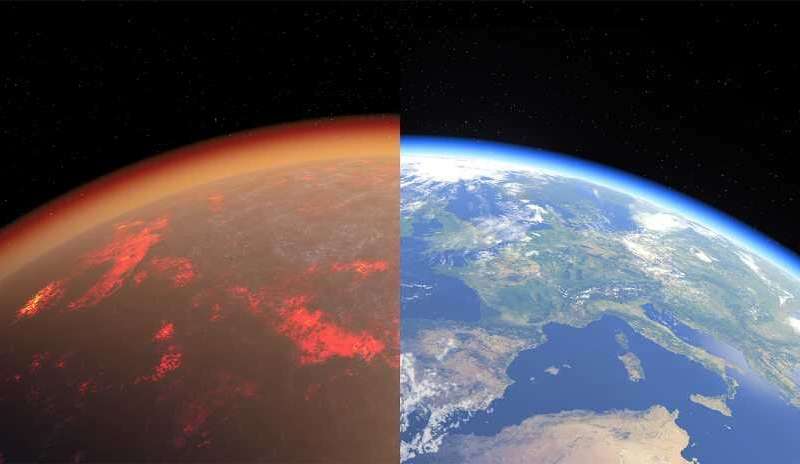HOME
What was early Earth like? Almost like Venus, research shows

A team of international scientists led by ETH researcher Paolo Sossi has gained new insights into Earth's atmosphere of 4.5 billion years ago. Their results have implications for the possible origins of life on Earth.
Four-and-a-half billion years ago, Earth would have been hard to recognize. Instead of the forests, mountains and oceans that we know today, the surface of our planet was covered entirely by magma—the molten rocky material that emerges when volcanoes erupt. This much the scientific community agrees on. What is less clear is what the atmosphere at the time was like. New international research efforts led by Paolo Sossi, senior research fellow at ETH Zurich and the NCCR PlanetS, attempt to lift some of the mysteries of Earth's primeval atmosphere. The findings were published today in the journal Science Advances.
"Four-and-a-half billion years ago, the magma constantly exchanged gasses with the overlying atmosphere," Sossi begins to explain. "The air and the magma influenced each other. So, you can learn about one from the other."
To learn about Earth's primeval atmosphere, which was very different from what it is today, the researchers therefore created their own magma in the laboratory. They did so by mixing a powder that matched the composition of Earth's molten mantle and heating it. What sounds straightforward required the latest technological advances, as Sossi points out: "The composition of our mantle-like powder made it difficult to melt—we needed very high temperatures of around 2,000° Celsius."
News Source